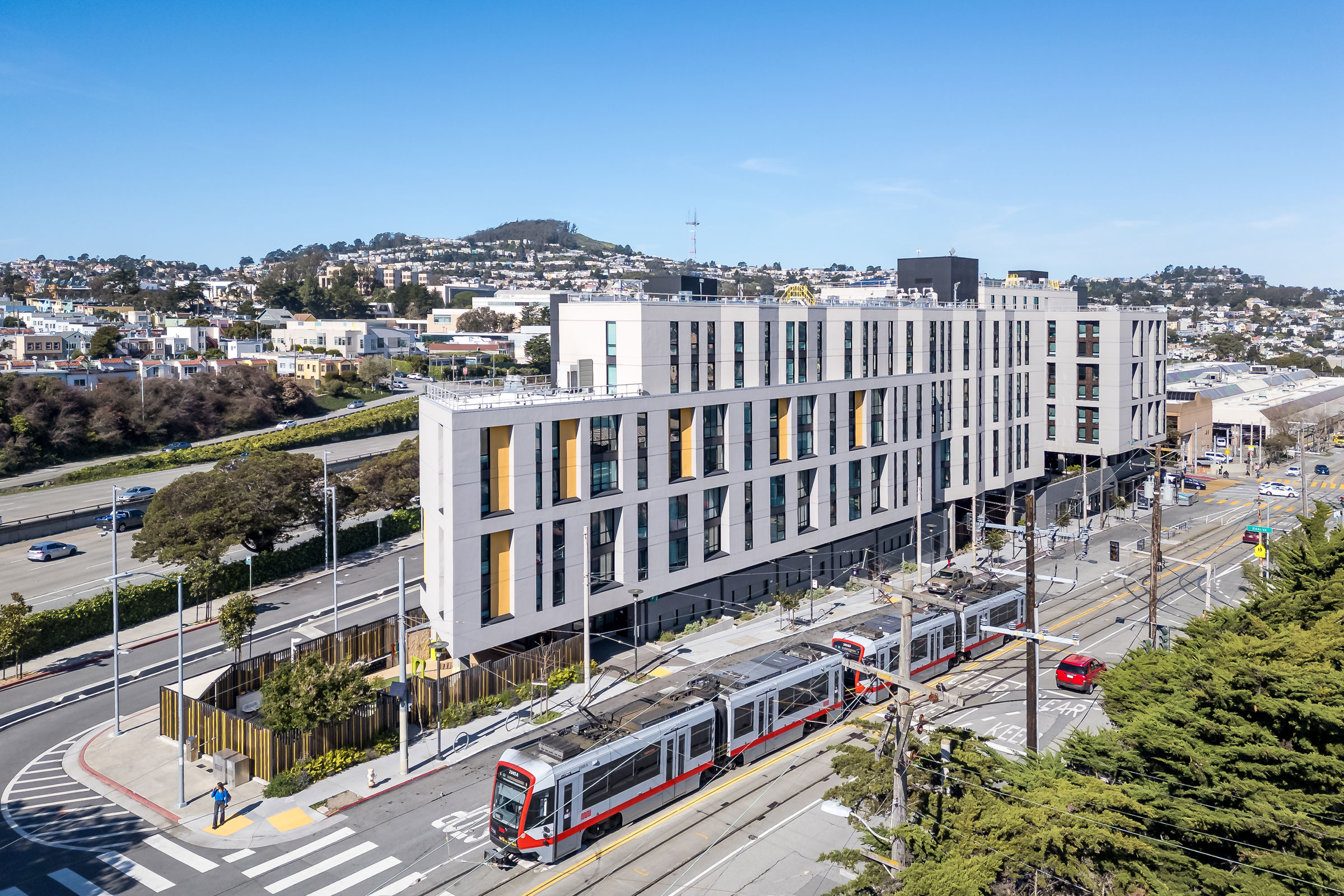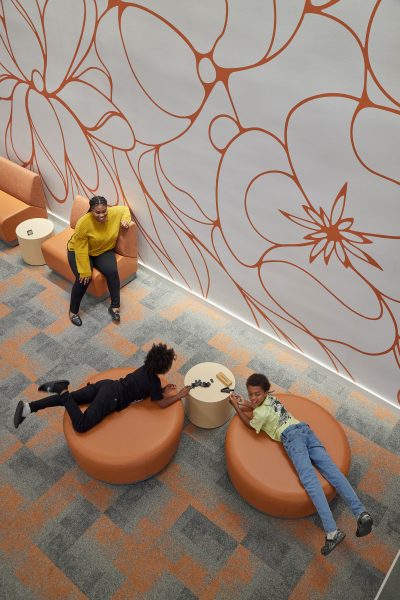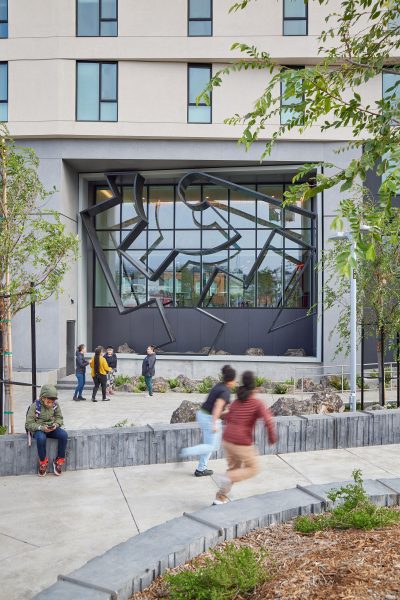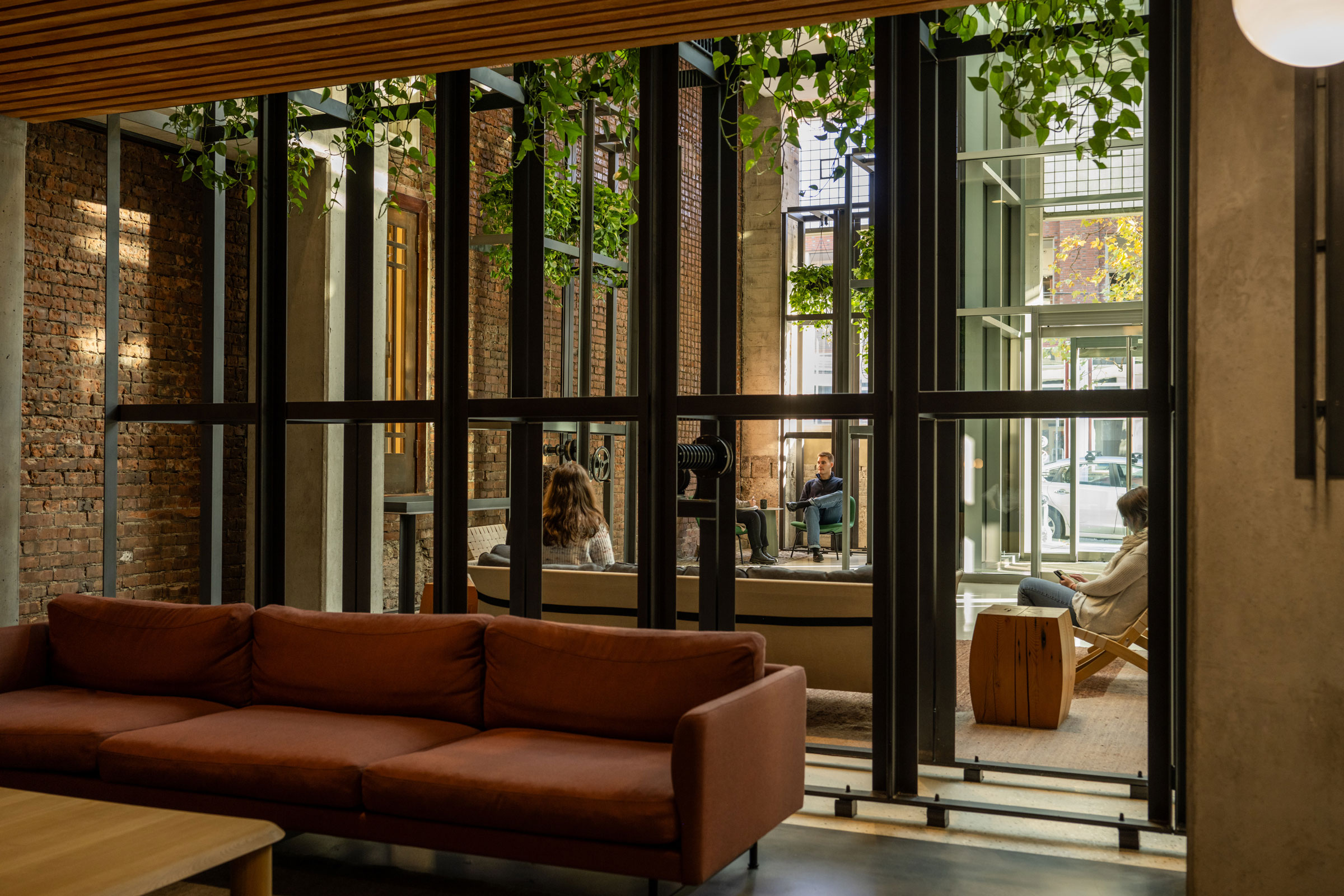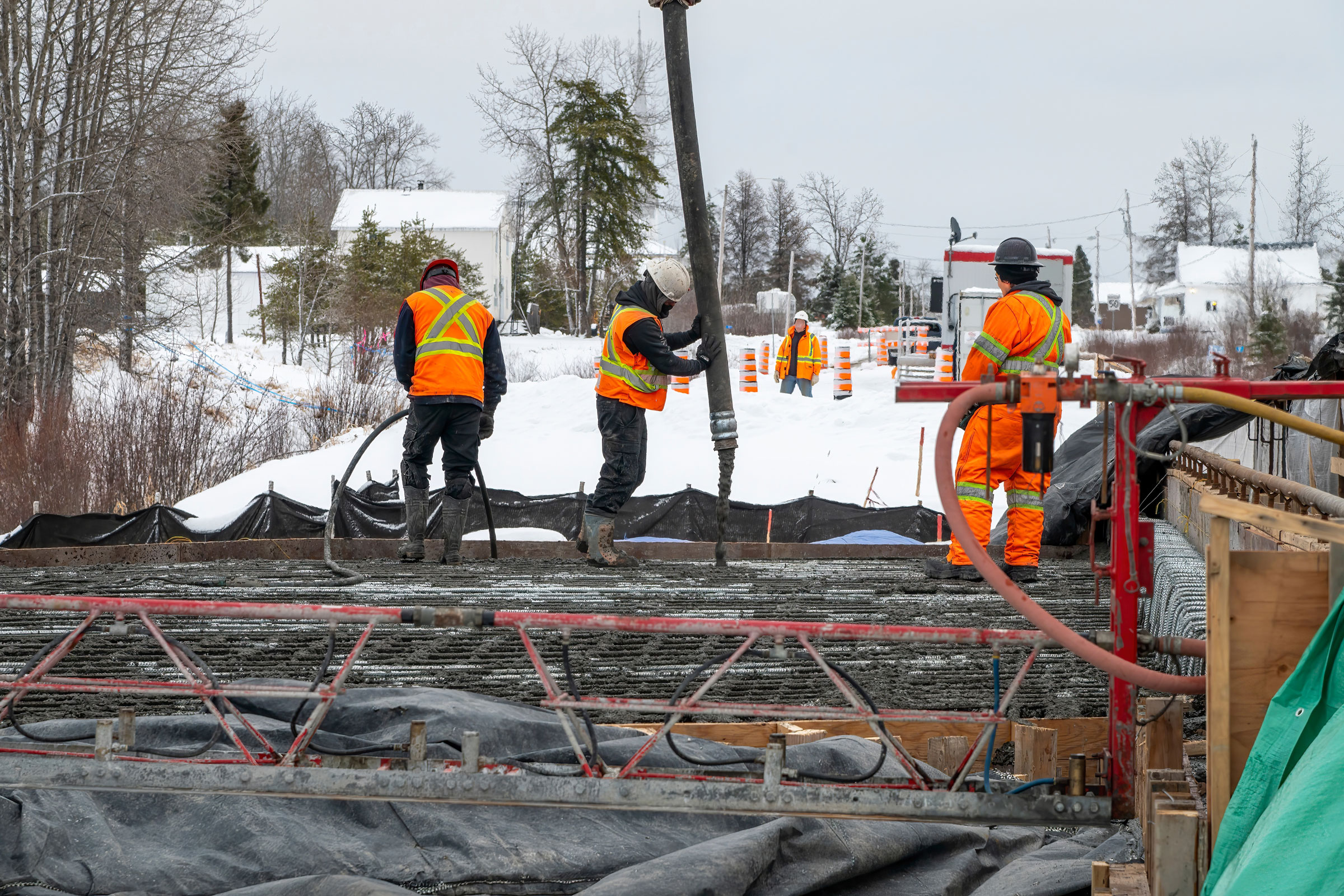Story at a glance:
- Mithun led community meetings to figure out how best to build affordable housing at the site of a transit station serving 24,000 commuters each day.
- The ground floor of Kapuso at the Upper Yard is dedicated to the community with a childcare center and accessible pedestrian-scale walkways.
- The project targeted GreenPoint Platinum Rating and Architecture 2030 compliance and also achieved Fossil Fuel–Free certification.
On a windswept, noisy corner in San Francisco’s Outer Mission neighborhood, commuters from six transit lines shuffled home, to school, to work—criss-crossing a forgotten, whale-shaped parking lot at the Balboa BART (Bay Area Rapid Transit) station. The lot was ugly, underutilized, and overexposed, its shape offering little inspiration for its potential.
But in San Francisco, where affordable housing is scarce and in high demand, the lot could not be ignored. A special design team would need to squeeze every drop of potential from the site, so the city issued a request for qualifications—not for proposals, but for evidence of the ability to engage with local organizations and neighbors to design and build something of value.
Design firm Mithun, together with affordable housing developers Mission Housing Development Corporation and Related California, won the RFQ with their proven ability to design true human-centered buildings. No strangers to affordable housing in San Francisco, Mithun’s designers leapt into community outreach, gathering insights that would lead them to build a nine-story, 130-unit residential building with a ground floor centered on community engagement and transit utilization. With input from community stakeholders, including Filipino Community Center and Poder, the project became Kapuso—meaning “one heart” in Tagalog—at the Upper Yard, symbolically and essentially an epicenter of health, connectivity, and soul.
A Program for the People
- Inside Kapuso at the Upper Yard in San Francisco. Photo Bruce Damonte, courtesy of Mithun
- Local artist Aaron De La Cruz made a sculpture that abstractly pictures his three children in the window of the community room overlooking the plaza. Photo Bruce Damonte, courtesy of Mithun
Mithun began its design process with community listening meetings to figure out: “How do we make this placeless place worthy of the vibrant neighborhood and worthy of the 24,000 commuters a day using this station?” says Anne Torney, partner at Mithun. Stakeholders present included public transit providers BART and SFMTA, who hoped the build would increase ridership. Local organizations like Filipino Community Center, Poder, and Communities United for Health and Justice sent representatives advocating solutions that would benefit people throughout the neighborhood—from City College students to people seeking safe housing to longtime family residents.
The multilingual gatherings made a concerted effort to reach people from across the neighborhood, including homeowners who were skeptical about the prospect of a new affordable housing development. “It was important for homeowners to be able to hear from people who needed this, to put their own apprehension in context of the tremendous need for housing,” Torney says.
The design team heard gripes about the wind and exposure of the site, as well as the havoc of navigating narrow sidewalks squeezed between multiple transit lines, a freeway off ramp, and an auto drop-off. They heard and incorporated ideas for ground floor spaces dedicated to childcare services and other community serving programs and were surprised to learn locals wanted to upsize the proposed six-story, 85-unit development for a larger and more housing-dense building.
Five main goals emerged from the community meetings—affordable units for families, an active ground floor for the community, a vibrant new BART plaza, safe streets for pedestrians and cars, and protected open space for residents.
A New Transit Plaza
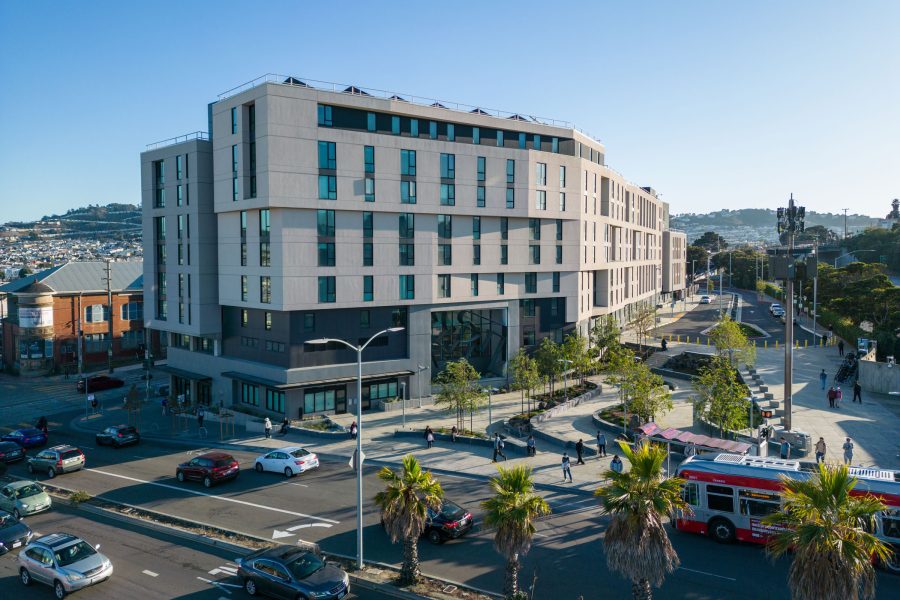
The ground floor of Kapuso at the Upper Yard is dedicated to the community with a childcare center and accessible pedestrian-scale walkways. Photo Tom Fitzgerald, courtesy of Mithun
With all the ideas at hand, the challenge became figuring out how to work them into the oddly shaped lot. “It’s a really challenging site in terms of accessibility in the public spaces because of the steepness,” says Tim Mollette-Parks, partner at Mithun and lead landscape architect for the Kapuso project. His job was to provide universally accessible pathways that reach from the site’s lowest corner to the bus stop and the highest corner of the site.
The framework provided by the community meetings offered fragments of the solution, and left enough physical space to figure out the execution, despite the grade. The team ideated an auto drop-off loop tucked back from the busy street to minimize conflict between pedestrians, cars, and buses. The ground floor was to be public and welcoming—with no parking whatsoever—so everything naturally came to pedestrian scale.
“The ground plane and those first few floors are what most people are going to experience. The plaza provides terracing that helps with the accessibility that Tim so brilliantly worked out,” Torney says. She points to the successful integration of seating areas for people waiting for buses, the ground floor cafe, and a big, double-height window in the building’s community room looking out onto the plaza through a sculpture by local artist Aaron De La Cruz. A mural at the back wall of the plaza by artist Lordy Rodriguez depicts the history of the neighborhood demographics and redlining.
“You don’t want to just solve a problem. You want to create an experience that fulfills the program and accessibility needs but also has a level of intrigue and magic,” Mollette-Parks says. The layering of architecture, landscaping, public art, and community ambitions kept the team from addressing only the physical challenges on site. “That’s a given. Now what do we do to elevate and make it a special place?”
Community Impact
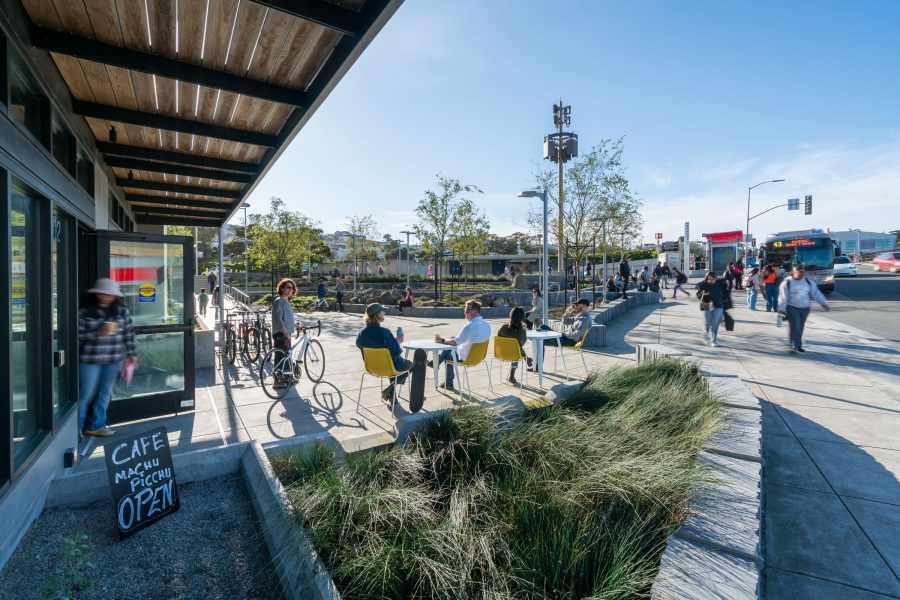
Outside Kapuso at the Upper Yard in San Francisco. Photo Tom Fitzgerald, courtesy of Mithun
A December post-occupancy evaluation revealed the project’s success in fostering community, wellness, and transit-oriented living, with 70 to 85% of respondents reporting that they utilize public transportation regularly, feel a sense of belonging at Kapuso, and are happy with the BART Plaza. The community room hosts well-attended bingo nights, movie screenings, and meetings, and the second-floor flexible youth space is now home to a non-profit serving low-income children.
Among the residents who have felt the building’s impact is an architecture student at the University of California Berkeley, who approached Mithun representatives at a career fair saying he had watched Kapuso being built over three years of development and finally was selected from the lottery to move into Kapuso. “It was part of the reason he switched his major to focus on architecture. That layer of generational impact was cool to see,” Mollette-Parks says.
Layered Sustainability Benefits
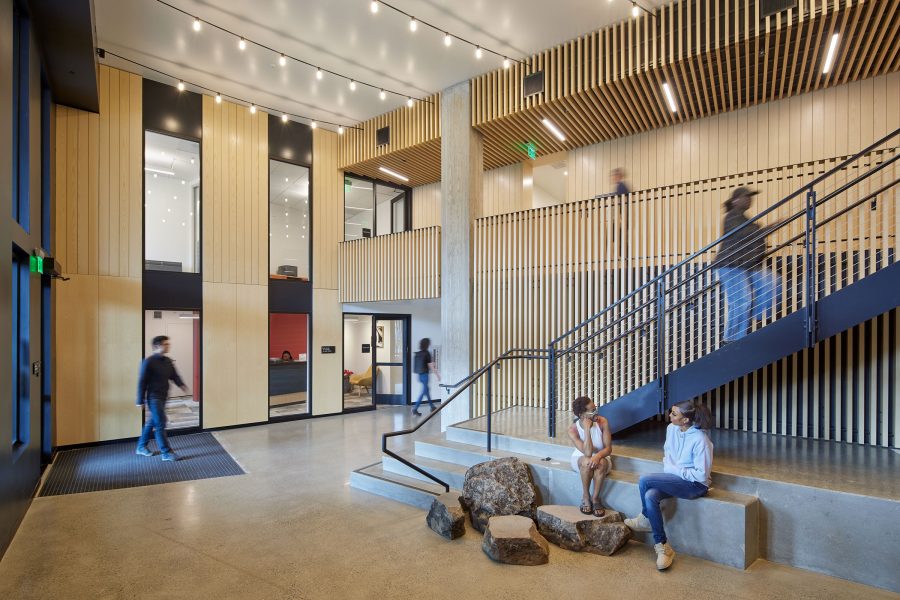
Design firm Mithun and affordable housing developers Mission Housing Development Corporation and Related California emphasized sustainable interior design at Kapuso at the Upper Yard. Photo Bruce Damonte, courtesy of Mithun
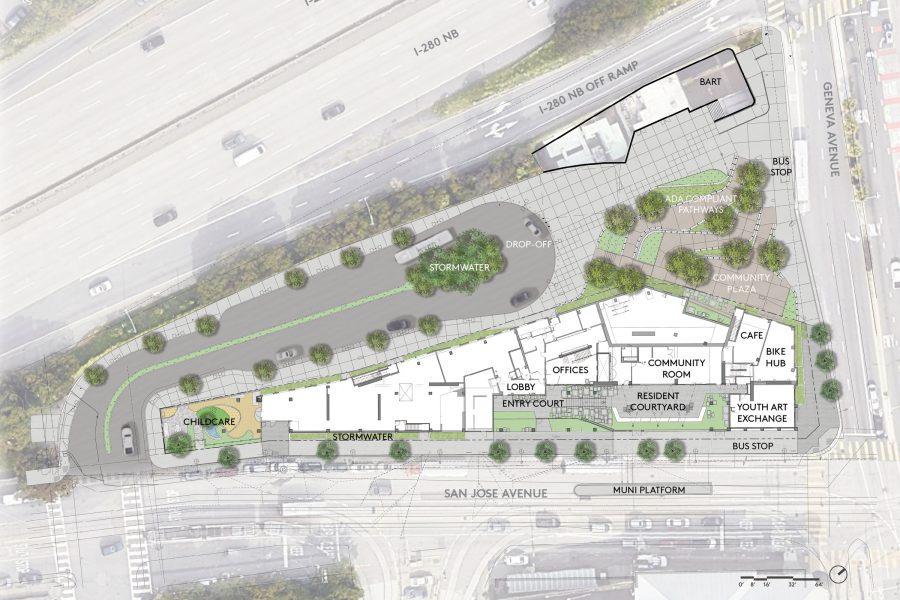
Kapuso at the Upper Yard. Site plan courtesy of Mithun
A vast majority of residents also indicated that they feel their household health has improved at Kapuso. The project targeted GreenPoint Platinum Rating and Architecture 2030 compliance and also achieved Fossil Fuel–Free certification. “It’s not just about hitting a metric. It’s about all the other things that it means for the residents, the owners, and frankly for the state and the planet,” Torney says.
The Fossil Fuel–Free achievement helps with resilience on a large scale but also boosts the health and safety of residents, as there is no risk of ruptured gas line fires in case of an earthquake. A solar hot water system provides more than 50% of the domestic heating load, and for a Type One building with a concrete structure, the embodied carbon is relatively low. The Mithun team worked with supplier Central Concrete to reduce the amount of cement in the admixture: “We achieved 60% less embodied carbon than a standard mix for the Bay Area,” Torney says.
The team’s philosophy revolves around these layered benefits. In the landscape, for example, stormwater mitigation, native drought-tolerant plantings, and social equity and accessibility all work together to make the outdoor spaces desirable and sustainable, maximizing the potential of the site for residents, commuters, daycare attendees, and everyone who passes through to feel like they are part of Kapuso’s “one heart.”

